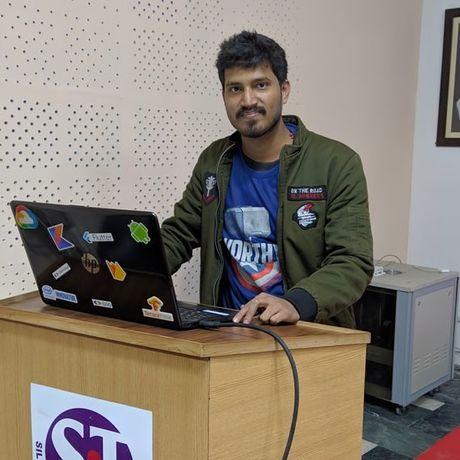Drowsiness detection and alert system (DDAS)
- 0 Collaborators
Drowsiness detection and alert system(DDAS) is an electronic device for the safety of the people who travel and drive. Nowadays there are several types of sensors and navigation systems available in the market for safe driving. One mistake of the driver can lead to severe damages or physical injuries, deaths and significant economic losses. ...learn more
Project status: Under Development
RealSense™, Artificial Intelligence
Groups
Student Developers for AI,
DeepLearning,
Artificial Intelligence India
Intel Technologies
Intel Opt ML/DL Framework
Overview / Usage
Drowsiness detection and alert system(DDAS) is an electronic device for the safety of the people who travel and drive. Nowadays there are several types of sensors and navigation systems available in the market for safe driving. One mistake of the driver can lead to severe damages or physical injuries, deaths and significant economic losses.
The idea of developing such a device arises from several aspects concerning about the safety of the people and economic losses. There are various reasons especially human errors which gives rises to road accidents. The recent reports say that there is a huge increment in the road accidents in every country since the last few years. The main reason occurring from the highway accidents is the drowsiness and sleepiness of driver while driving. The long route drivers can sometimes asleep while driving, which is dangerous for everyone with him. It is a necessary step to come with an efficient technique to detect drowsiness as soon as the driver feels sleepy and give an alert before any could go wrong.
How big the problem is ?
Drowsy driving is a major problem in the World. The risk, danger, and often tragic results of drowsy driving are alarming. Drowsy driving is a dangerous combination of driving and sleepiness or fatigue. This usually happens when a driver has not slept enough, but it can also happen due to untreated sleep disorders, medications, drinking alcohol, or shift work. No one knows the exact moment when sleep comes over his or her body. Falling asleep at the wheel is clearly dangerous, but being sleepy affects your ability to drive safely even if you don't fall asleep.
Drowsiness:-
Makes drivers less able to pay attention to the road.
Slows reaction time if you have to brake or steer suddenly.
Affects a driver's ability to make good decisions.
Key Facts:-
Nearly 1.25 million people die in road crashes each year, on average 3,287 deaths a day and an additional 20-50 million are injured or disabled.
More than half of all road traffic deaths occur among young adults ages 15-44.
Road crashes are the leading cause of death among young people ages 15-29, and Each year nearly 400,000 people under 25 die on the world's roads, on average over 1,000 a day.
Over 90% of all road fatalities occur in low and middle-income countries, which have less than half of the world's vehicles.
Road crashes cost USD $518 billion globally, costing individual countries from 1-2% of their annual GDP.
Road crashes cost low and middle-income countries USD $65 billion annually, exceeding the total amount received in developmental assistance.
Unless action is taken, road traffic injuries are predicted to become the fifth leading cause of death by 2030.
Drowsiness detection and alert system:-
A small device based on Intel UP Squared AI Vision, UP HD camera runs on Ubuntu 16.04 LTS. The Drowsiness Alert device has the capability to detect the drowsiness, With the help OpenCV, Python, dlib, imutils, and tensorflow to create facial landmarks and checking the EAR(eyes aspect ratio) value to detect drowsiness.
What do Drowsiness detection and alert system do?
The device continuously monitors the driving condition of the driver. If the device detects a change in the condition if the person is drowsy the device turn on an alarm/beep. The alarm can act as a signal to alert everyone so that they can be saved from the accidents.
Methodology / Approach
There are several ways to detect eyes in a video. This is a relatively new problem, so the standard technique has not been established. I have researched and I found different methods, all of which have their own pros and cons.
Detecting Eye Blinks with Facial Landmarks:-
Eye blinks can be detected by referencing significant facial landmarks on the face. There are many software libraries that can plot significant facial features within a given region of interest. Python's dlib library uses Kazemi and Sullivan's One Millisecond Face Alignment with an Ensemble of Regression Trees to implement this feature. The program uses a facial training set to understand where certain points exist on facial structures. The program then plots the same points on a region of interests in other images, if they exist. The program uses priors to estimate the probable distance between key points. The library outputs a 68 point plot on a given input image. For eye blinks, we need to pay attention to points from 37 to 46, the points that describe the eyes. In Real Time Eye Blinking Using Facial Landmarks, Soukupová and Čech derive an equation that represents the Eye Aspect Ratio. The Eye Aspect Ratio is an estimate of the eye-opening state. They proposed a simple but efficient algorithm to detect eye blinks by using a recent facial landmark detector. A single scalar quantity that reflects a level of the eye-opening is derived from the landmark. Finally, having a per-frame sequence of the eye-opening estimates, the eye blinks are found by an SVM classifier that is trained on examples of blinking and non-blinking patterns. The Eye Aspect Ratio is a constant value when the eye is open but rapidly falls to 0 when the eye is closed. The figure shows a person's Eye Aspect Ratio over time. The person's eyeblinks are obvious.
Technologies Used
Intel UP squared AI vision
Intel UP HD camera
Python2.7.12
Tensorflow
OpenCV
Repository
https://github.com/Gauravsahadev/Drowsiness-detection-and-alert-system-DDAS-












